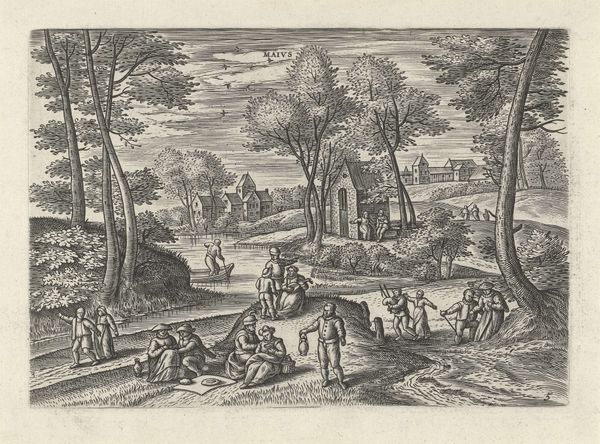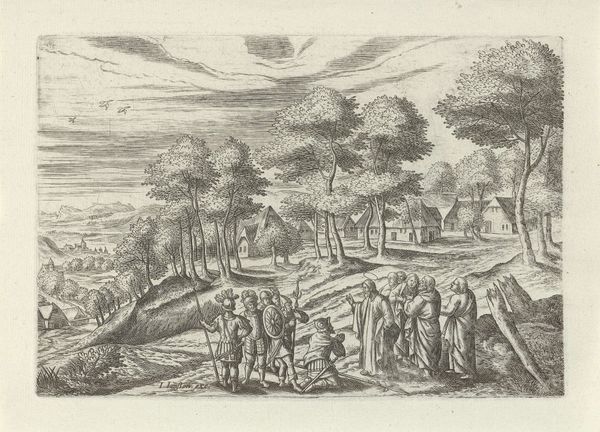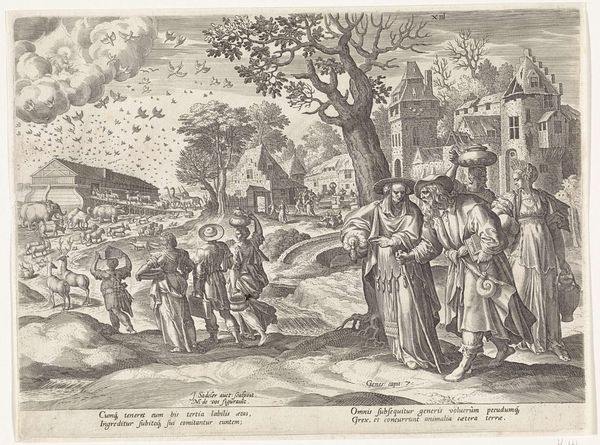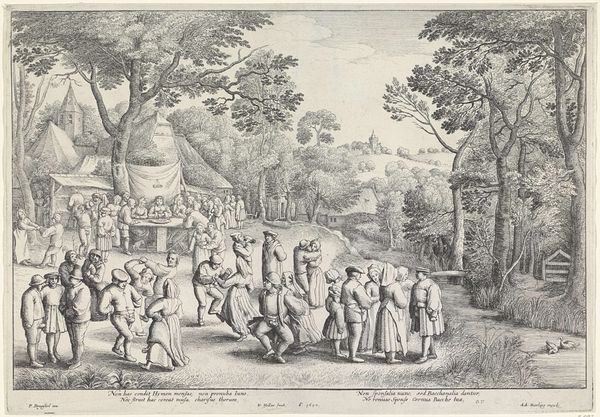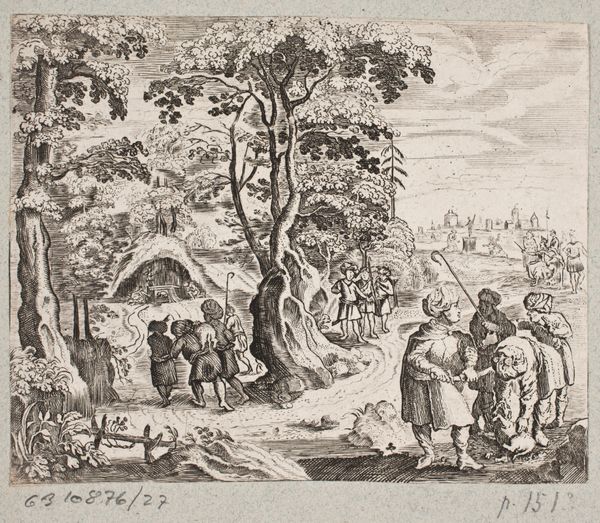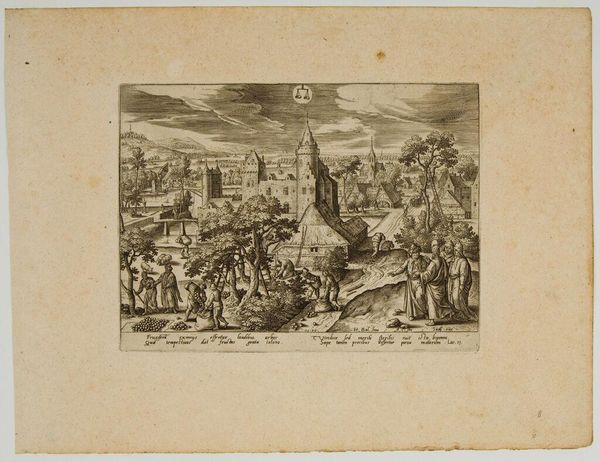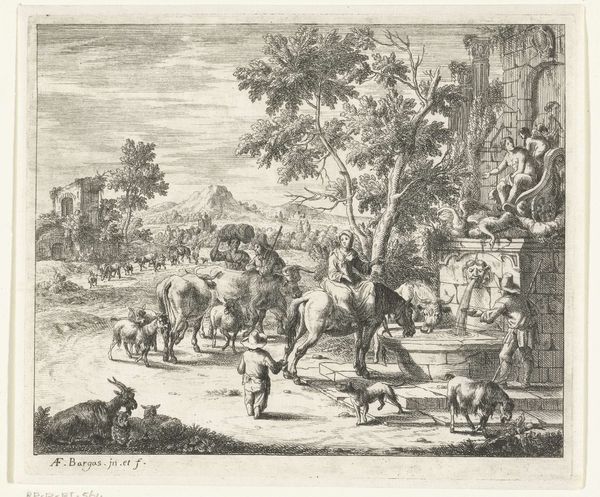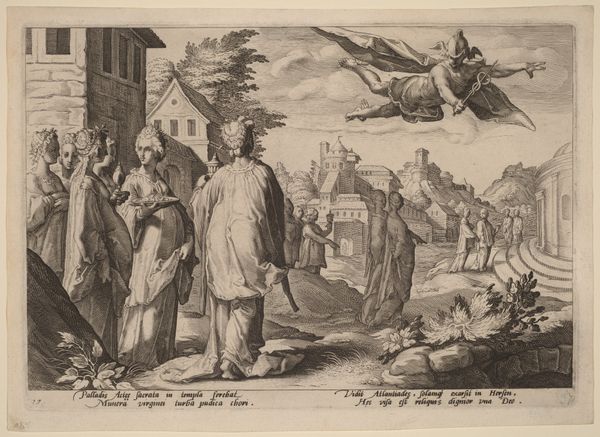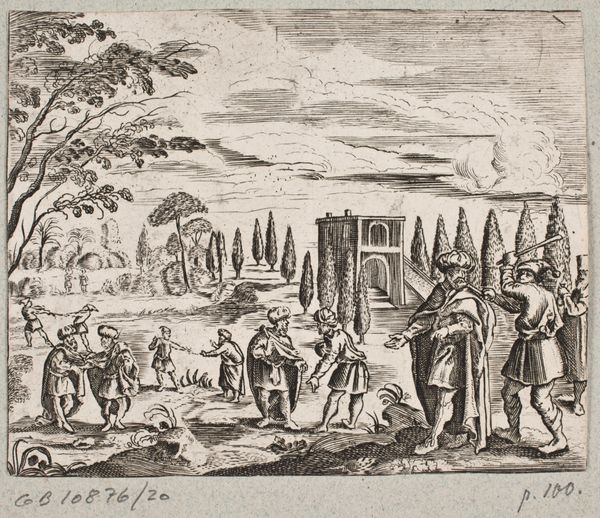
print, engraving
# print
#
landscape
#
mannerism
#
figuration
#
line
#
history-painting
#
engraving
Dimensions: height 115 mm, width 163 mm
Copyright: Rijks Museum: Open Domain
Curator: Look at this delicate print; it is entitled "Landscape with Abraham and the Three Angels," created by Julius Goltzius sometime between 1560 and 1595. Editor: It feels so… intricate. All those lines! The angels look so human, draped in cloth; the scene has an odd tranquility given the weighty narrative unfolding. Curator: Exactly! It’s crucial to remember the story here, found in Genesis 18, about divine messengers appearing to Abraham and Sarah. They are prophesying that the elderly Sarah will miraculously conceive a son, Isaac, and how that connects to broader themes of promise and divine intervention. Think about Sarah’s position as a woman of advanced age, experiencing social pressures around not bearing a child. Editor: Right, it hits at a turning point. I'm immediately drawn to the way the artist has used line to differentiate textures: the rough bark of the tree, versus the smoothness of the angels' robes. Curator: Notice how Goltzius is embedding the religious subject matter within a bustling, panoramic landscape. This wasn't just about illustrating a Bible story; it was about showing the world, and the unfolding of divine plans. Editor: And the architecture! That detailed city view; what significance does that hold for Goltzius? Curator: Consider how 16th-century audiences understood that image – not just geographically but ideologically. These cityscapes spoke to the era's expanding worldview. Editor: Looking again, it's striking how much visual weight the city possesses versus the comparatively smaller figures, despite the figures depicting a central religious tenet. I keep gravitating back to this interesting visual balance. Curator: Ultimately, "Landscape with Abraham and the Three Angels" isn't simply a history lesson; it's an engagement with power structures, societal anxieties, and faith in 16th-century Europe. Editor: It offers a great lesson in how powerful the interplay of line and form can be, and reminds us of a period obsessed with translating grand narratives through intensely detailed visual forms.
Comments
No comments
Be the first to comment and join the conversation on the ultimate creative platform.
